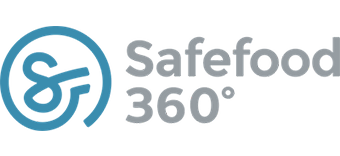How to develop a food safety system framework using Alerts and Escalations
It is important to be informed when something in your process has gone wrong and to be able to react and respond accordingly. The tools that we use to achieve this are known as alerts and escalations.
A full understanding of these tools helps you to construct a robust framework that can inform you of any non-conformances or issues that arise. This blog demonstrates how you can apply them within your organization to improve food safety and quality.
Background
Safefood 360° has an “Alerts” feature. The Alerts feature is designed to allow both local sites and business units / groups to maintain real time oversight on the compliance status of their organisation.
The provision of this module reflects a reality that from time to time events and overdue tasks arise which may pose a real or immediate business or food safety risk.
Visibility on these is essential to mitigate the adverse impacts that may arise and this is where Alerts come in.
What is an Alert?
An alert is an electronic warning, notification or caution that a specific event has occurred or is due to occur and which may pose a risk.
An alert may also cover specific actions which have gone beyond their due date and ongoing failure to complete the action may pose a risk.
What is an Escalation?
An alert may also be an escalation of any of the above to higher layers within the organisation once a certain period of time has elapsed and based on the assumption that the alert will not be actioned without special intervention.
Objectives of Alerts & Escalations
There are a number of reasons why alerts are an essential element of an effective food safety system.
Food businesses and manufacturing sites conduct their operations in the real world. This means that various factors which can change often influence the day to day efficiency and effectiveness of a food safety management system.
While this is not usually a major source of concern, the fact that they exist should not impact on the ability of the operation to produce safe and legal food. The role of the food safety management system must be to ensure that where events, activities, results and outputs occur which are at variance with the requirements they can be quickly seen. It is our role to ensure that these are visible and actions can be taken in a timely way to prevent adverse impacts.
Food Safety Management Systems should ensure when variance with requirements occur they can be quickly seen
In summary, Alerts and Escalations are the highest expression of an efficient and effective food safety management system.
Alerts framework and design
It is important to understand that just because an event occurs in a food safety management system, it does not necessarily mean it should be alerted.
Alerts are special! They hold a particular place in our food safety management system and are treated with a special value.
If all events and actions were alerted they would immediately lose their value
If all events and actions were to be alerted within an organization they would immediately lose their value. People would be quickly overwhelmed and develop immunity to them. For this reason we need to develop a clear policy and framework for the management of alerts and application within the business process.
To develop this framework we need to assign a particular quality or character to all events, actions and outputs from the food safety system which separates them from each other. This quality or character must assign a value to an event and from this judgments can be made.
This unique quality or character is referred to as ‘Risk’.
The role of Risk in developing an Alerts Framework
Every alert generated in Safefood 360° must have value, or more specifically add value. This means that an alert must in some way either prevent, mitigate or reduce the likelihood of an adverse business or food safety impact occurring. Value is the essential character of all alerts.
In strict food safety terms, this value is expressed in the form of Risk. Risk is the likelihood that a hazard will cause some adverse impact. This is well accepted in food safety circles and is used throughout Safefood 360° to give specific character to programs, records and workflows.
Before we undertake the development of our Alerts Framework we must first undertake risk assessment of all activities, actions, programs and records with our system. Safefood 360° uses a simple risk assessment model to do this (with the exception of the Food Safety Plan module where an advanced model is used).
This model allows users to rate the risk as either High, Medium, Low or None. These are qualitative assessments based usually on the experience of the user, their insight into the local operations and the available data relating to hazards. However in order to complete these risk assessments with sufficient accuracy clear criteria is required to help the user in their efforts.
The following provides a suggested model and criteria for conducting risk assessments within Safefood 360°.
| High | High Risk relates to a requirement* which is deemed to be essential for the safe realization of products for supply to the market and where a failure in the requirement is likely to lead to an adverse impact on consumer health, product withdrawal or regulatory non-compliance. |
| Medium | Medium Risk relates to a requirement which while important for safe product realization, it does not pose an immediate or grave risk to the consumer where failure occurs. However over time the ongoing or accumulative effective of failure may lead to an adverse impact. |
| Low | Low Risk relates to a requirement which does not have an immediate or direct relation to safe realization of products and typically relate to more general low risk hazards and management processes. |
| None | None relates to a requirement which by its nature has no impact on food safety |
*A Requirement may be a specific program, action, record, procedure, workflow, event, test or data result and which can be risk assessed within the software.
Using the above model and criteria, the user is now capable of assigning a risk rating to each requirement, which in turn allows a valuable alert to be created.
Conclusion
Risk is an absolute necessity in the successful implementation and running of a food safety management system. In order to get the best results for you and your business, both from an operations and cost perspective Risk management through alerts and actions should be readily available in any plant personnel’s repertoire.
It is absolutely essential that risk is the basis for alerts to avoid any needless waste of time and resources in following up and actioning alerts.






Leave a Reply
Want to join the discussion?Feel free to contribute!